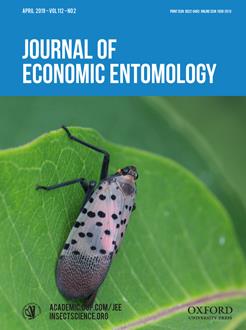The boll weevil, Anthonomus grandis grandis Boheman (Coleoptera: Curculionidae), is a major pest of cotton (Gossypium spp. (Malvales: Malvaceae)) in Mexico, South America, and SouthTexas in the United States.The ability of the boll weevil to survive extended cotton-free periods has been key to its persistence as a pest despite intensive control efforts. However, the mechanism facilitating survival has been subject to debate. Whereas adult diapause has long been considered the principal survival mechanism, some authors have characterized the dormancy as a quiescence. We induced dormancy in the weevil and examined whether food type, enforced starvation, or induced flight influenced termination of the dormancy. Providing dormant adult weevils a diet favoring reproduction for 7–14 d prompted a modest termination response in female weevils and virtually no response in males. Some weevils starved ≥21 d resumed reproduction after exposure to a favorable diet, but most weevils remained dormant. Induced flight followed by exposure to a favorable diet prompted >50% of the weevils to terminate the dormancy. Patterns of feeding and oviposition were also useful in interpreting the termination response.These results indicate that the dormancy exhibited by the weevil is a diapause of variable intensity rather than a quiescence. A conceptual model recognizing population heterogeneity in diapause induction and intensity is consistent with reports of host-free survival and accommodates perceived differences in boll weevil ecology among temperate, subtropical, and tropical regions. This model provides a framework that will be valuable to research, management, and eradication efforts in the tropics and subtropics.
How to translate text using browser tools
26 December 2018
Termination of Diapause in the Boll Weevil (Coleoptera: Curculionidae)
Dale W. Spurgeon,
Charles P.-C. Suh
ACCESS THE FULL ARTICLE
It is not available for individual sale.
This article is only available to subscribers.
It is not available for individual sale.
It is not available for individual sale.

Journal of Economic Entomology
Vol. 112 • No. 2
April 2019
Vol. 112 • No. 2
April 2019
cotton
dormancy
overwintering
termination
weevil




